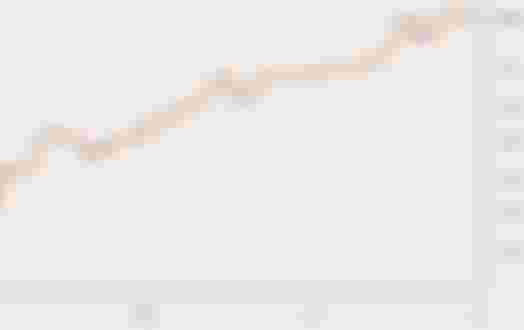Technical analysis is an excellent way to assess the price of a stock and estimate its future path. While the technical indicator relies on historical data, the analysis of price movements may be a very vital process that is studied on a large scale for the purpose of investment. Technical indicators generally complement the fundamental analysis function. The latter focuses more on the financial position of the company along with the prevailing economic conditions.
Technical indicators are widely used in the stock and forex markets. It helps in studying future price movement by simulating prices from the past. There is also an increasing complexity of the new indicators.
Thanks to additional computing capabilities, indicators are now able to track price movements over the course of a second. This provides traders with the ability to act faster and more efficiently.
Table of contents:
What is a technical indicator?
What are the types of technical indicators?
Some commonly used technical indicators
Conclusion
What is a technical indicator?
A technical indicator is a mathematical approach or mathematical formula to obtain an understanding of the likely direction of an asset's price movement. The inputs to this formula include the historical price, volume, or open interest in the case of derivatives. The indicator is generally plotted on a trading chart and traders take advantage of the trend in estimating how the price will behave in the future. As a trader, you can customize most of these indicators according to your personal needs.
While these indicators provide a simple way to identify trendlines, you will need to test them first to assess their potential. This is especially important given that many of the existing indicators are constantly being updated. Traders are also creating more new indicators every day. One of the effective methods for estimating the effectiveness or accuracy of a pointer is called back testing. It is a process in which actual results are compared to predictions for the indicator itself. If both results are compatible, then the indicator can be considered effective. In such a situation, the investment decision would be feasible.
What are the types of technical indicators?
Whether they're tracking price or other metrics, indicators can be categorized in a number of ways, depending on what you're tracking. In general, you can classify indicators into the following four categories:
Trend indicators
This type of indicator serves to clarify the trend in the price of an asset. It helps traders understand if the signal is strong or if they are seeing a potential price reversal. The Moving Average (MA) indicator is one of the most popular trend indicators.
Momentum indicators
A more advanced form of trend indicator, momentum indicators help determine the strength of the indicator. It helps determine whether the asset is overbought or oversold. Relative Strength Index (RSI) and MACD are popular momentum indicators.
Volume indicators
Volume indicators are based on volume of trades of trades, and how often these assets are bought or sold. Often supplemented with trend / or momentum indicators, they help confirm the results of other indicators. The Volume Oscillator is a good example of volume indicators.
Liquidity indicators
Volatility measures the deviation of the price from its mean. High volatility indicates that the price has been fluctuating a lot and you can expect it to remain stable in the future. In particular, the Bollinger Bands Indicator is one of the most commonly used volatility indicators.
Some commonly used technical indicators
Although there is a wide range of technical indicators that can be used, we have listed a few commonly used indicators that can be easily understood.
Moving average indicator
It is a trend indicator and one of the most widely used technical indicators. Plots the share price with the average price over a given period. The average price can represent a number of days or you can customize it and reduce the representative timeframe to just a few minutes. The chart below shows the 14-period (day) weighted moving average indicator represented by the price of the S&P 500 E-Mini.

As you notice on the chart, on many occasions when the price line crosses the moving average line, a reversal in the trend results. This is also referred to as an intersection. As a trader, you can customize the period of time for the indicator depending on whether your interest is trading short or long term.
Moving average indicators are also used to determine resistance or support point. To the upside, the 50 day moving average, the 100 day moving average, or the 200 day moving average could be used to determine the support level. You can make similar observations of resistance levels in a downtrend. Moving average indicators are lagging in nature, as they are based on historical prices.
The EMA indicator shown in the image below is an advanced version of the average of the basic MA indicator. It gives more weight to the latest prices when calculating the moving average. This helps explain the latest price and thus reduce the lag that we generally notice in SMA indicators.
RSI indicator
The Relative Strength Index is a popular momentum indicator whose value is represented between 0 and 100. A value of an index higher than 70 indicates that the stock is in an overbought condition and there may be selling pressure in the future. The RSI below 30 indicates an oversold condition and that there is a potential price increase in the coming days. The mathematical formula for the RSI is:
RSI = 100-100 / (1 + RS)
RS stands for Relative Strength. It measures the average return of the upward move divided by the average returns of the downward move. In the 15 day RSI, if there is 10 days of gain with an average gain of 0.5% and 5 days of loss with an average loss of 0.25%, the RS is 2 and the RSI is 67%.
The chart below shows the classic 14-day RSI for the S&P 500 E-Mini stock.

Unlike MA indicators, you need to plot the RSI in a different section because the scales are different from those in price. The dashed lines represent overbought or oversold levels. In many cases, the price drops each time the RSI breaks through the 70 level. You can also reduce the timeframe to a few seconds instead of 14 days for a more vibrant trade. Traders are also changing the overbought level to 90 as the oversold level to 10 to further confirm the signal.
Volume Oscillator indicator
Price indicators may sometimes produce results that do not necessarily reflect the true picture. In periods of consolidation when prices are relatively stable, price indicators may not be reliable. Likewise when there is no significant volume to support price volatility, changes in price may not be sustainable. Volume indicators give credence to the results obtained from other indicators.
Volume Oscillator is one such indication. Here's how to calculate it:
Volume Oscillator = [(simple average of volume in circulation for a shorter period - simple average of volume in circulation for a longer period) / simple average of volume in circulation for a longer period) * 100
The chart below shows a volume indicator when the longest period is 10 days while the shortest period is 5 days.

In the chart above, we do not see a distinctive pattern indicating that the volume oscillator may support the upside that we can observe. This might be crucial if the oscillator's scores are consistently higher than 0%. However, you cannot cross out the indicator. It is best used in conjunction with other technical indicators.
Bollinger Bands Indicator
It is a volatility indicator that uses the simple moving average and uses volatility as its input. The following three lines make up the range: the n-period simple moving average line, the upper Bollinger line, and the lower Bollinger line. The top line is generally two standard deviations above the simple moving average while the bottom line is two standard deviations below. Standard Deviation is a measure of volatility. Thus, we can consider the Bollinger Bands as a volatility indicator.
Upper Bollinger line = simple moving average + number of standard deviations * volatility
Lower Bollinger Line = Simple Moving Average - Number of Standard Deviations * Volatility
The closer the lines, the lower the level of volatility. Prices near the lower border of the Bollinger Bands can indicate an oversold condition, indicating that traders are buying. Many experienced traders recommend analyzing trends when looking at Bollinger Bands patterns.

There are other technical indicators such as the MACD that provide useful insights but they may be a little complicated to understand. Hence, beginners must first understand the basics and try to apply them in real scenarios. It might be better for traders to test their knowledge of these indicators on a demo account. And you'll find many brokers that offer demo trading accounts at no additional charge.
Conclusion
With the development of trading systems, trading indicators have been relied upon to provide signals that are more dynamic in nature. Traders are constantly looking for variables that can provide them with information about every second. Even long-term investors who are more reliant on fundamental analysis look to technical indicators to gauge market sentiment. Indicators are becoming more complex, and we advise traders to use them wisely and not rely on just one indicator.




Very much impressive,,, please be supportive sub done from me now its ur turn